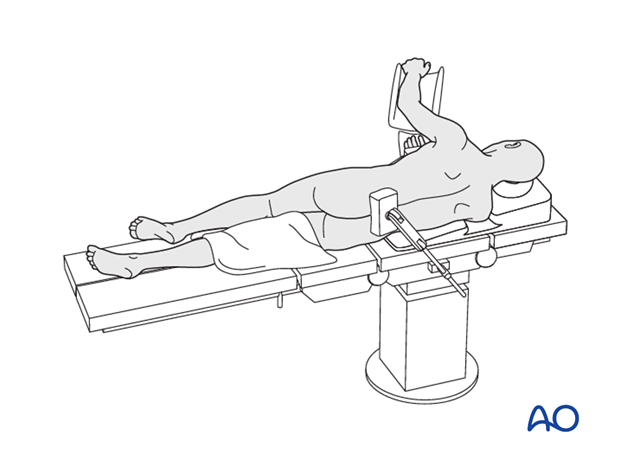Lateral decubitus for minimally invasive lumbotomy (L2-L4)
1. Positioning for MIS lumbotomy (L2-L4)
Generally, the approach is done from the left side to avoid the liver and the vena cava. The patient is placed onto a radiolucent table and turned into the lateral decubitus position, left side up.
The left arm is elevated and placed in a well-padded support and a cushion pad should be placed underneath the right axilla.
The knees should be slightly flexed. The knee and hip flexion allows relaxation of the psoas muscle.
Depending on surgeon preference, the table could have a tilting option. If selected, the tilting option should be located underneath the patient's thoracolumbar junction.
Pitfall
If the tilting option is used in the table, be careful to straighten the table prior to performing the instrumented fusion.

2. Anesthesia
General anesthesia with endotracheal intubation is required.
3. Preoperative antibiotics
Antibiotics should be administered well prior to the incision and also at intervals during the procedure or when the blood loss exceeds 2 liters.
A cephalosporin antibiotic with good gram positive coverage is generally recommended. Local bacterial spectrum will need to be taken into account; this should be discussed with the hospital microbiologist.
4. Spinal cord monitoring
Spinal cord monitoring is optional.
5. Fluoroscopy/x-ray control
Fluoroscopy or x-ray control is mandatory. Preoperatively, it should be assured that the C-arm can be moved around the patient freely.













